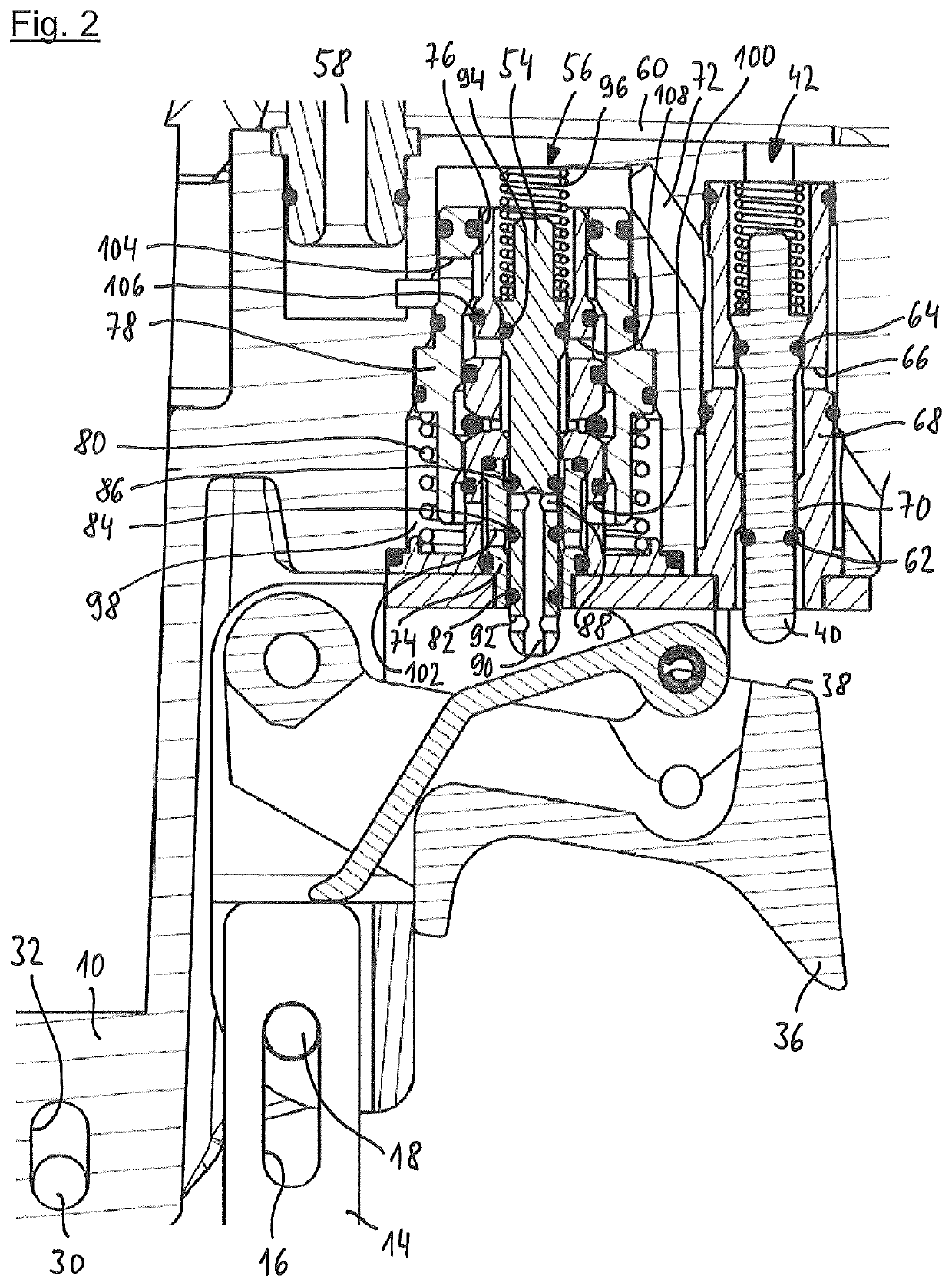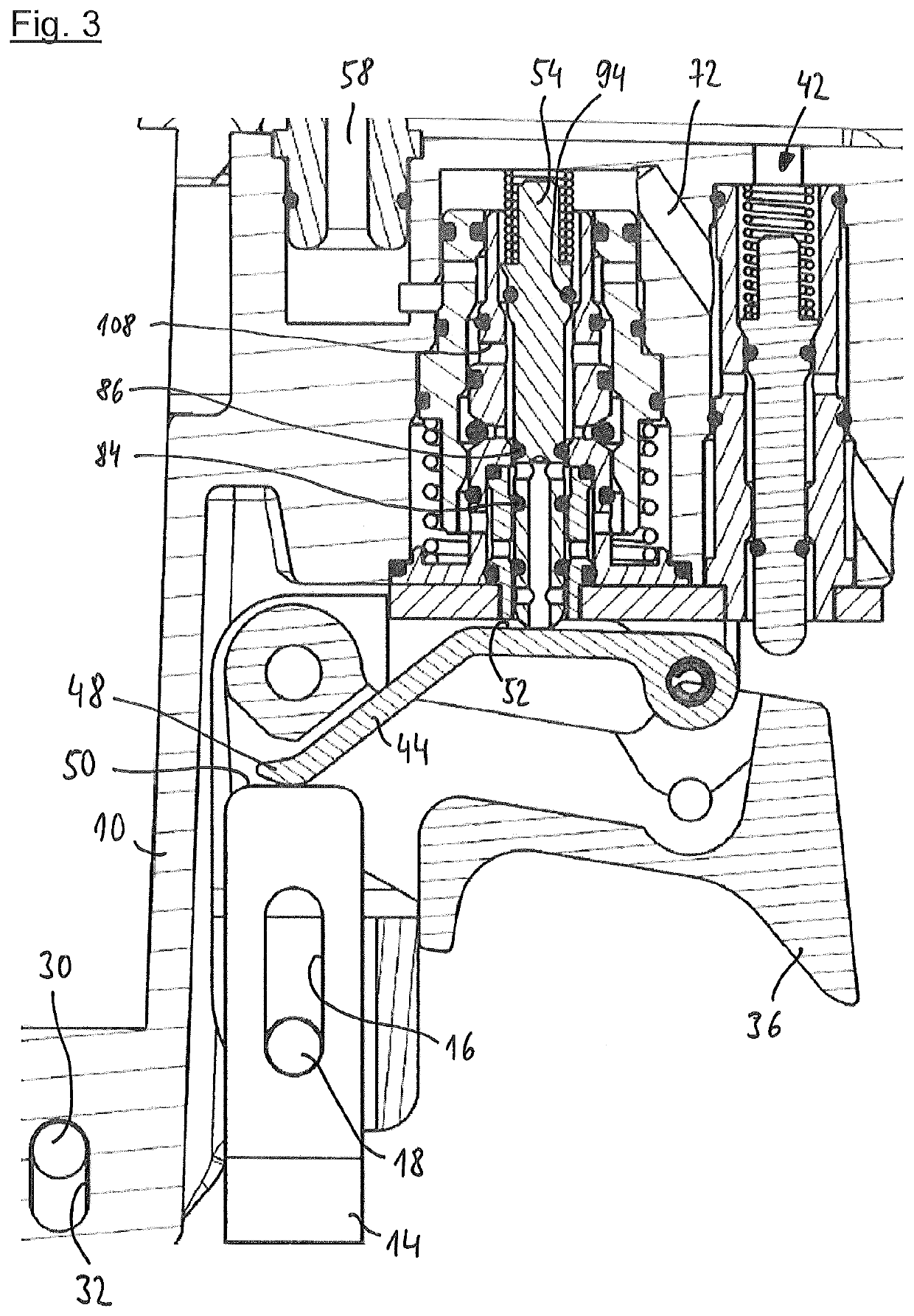Pneumatic nailer with a safety device
a safety device and nailer technology, applied in the field of pneumatic nailers, can solve the problem of not being able to trigger a driving-in process, and achieve the effect of dampening the backward movement of the control valve member, avoiding unnecessary wear, and simple design solution
- Summary
- Abstract
- Description
- Claims
- Application Information
AI Technical Summary
Benefits of technology
Problems solved by technology
Method used
Image
Examples
Embodiment Construction
[0038]The pneumatic nailer, of which only a section is shown in FIG. 1, has a pneumatic connection and a working cylinder in which a working piston connected to a driving ram is slidably guided. The working cylinder is closed at the top by a main valve which is actuated by a pilot valve. As far as now and in the following the directions above and below are used, these refer to the normal working position of the pneumatic nailer, where the pneumatic nailer is placed on a workpiece with a horizontal surface. A magazine is used to hold a supply of fasteners, especially nails or staples, and ends at the front of a mouth tool into which individual fasteners are inserted. These are then driven into a workpiece by the driving ram when compressed air is applied to the working piston, controlled via the main valve and the pilot valve. These elements of the pneumatic nailer essentially correspond to the state of the art and can, for example, be designed as described in detail in EP 3 257 633 ...
PUM
 Login to View More
Login to View More Abstract
Description
Claims
Application Information
 Login to View More
Login to View More - R&D
- Intellectual Property
- Life Sciences
- Materials
- Tech Scout
- Unparalleled Data Quality
- Higher Quality Content
- 60% Fewer Hallucinations
Browse by: Latest US Patents, China's latest patents, Technical Efficacy Thesaurus, Application Domain, Technology Topic, Popular Technical Reports.
© 2025 PatSnap. All rights reserved.Legal|Privacy policy|Modern Slavery Act Transparency Statement|Sitemap|About US| Contact US: help@patsnap.com



